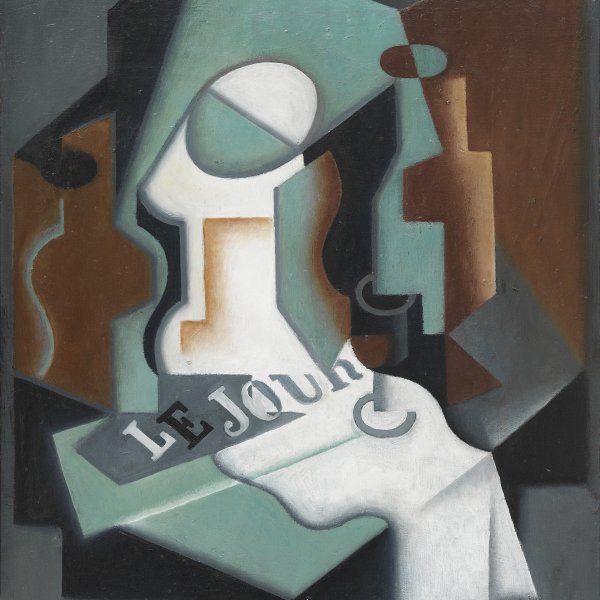Juan Gris
Madrid, 1887-Boulogne-sur-Seine, 1927
Juan Gris is hailed as one of the foremost figures of the Cubist movement. His importance lay both in his works, chiefly portraits and still-life scenes, and in his theoretical contribution. He studied at the Escuela de Artes y Oficios in Madrid and at the studio of the painter José Moreno Carbonero, and also contributed to various periodicals such as Blanco y Negro and Madrid Cómico. In 1906 he went to live in France, where he was to spend the rest of his life, and took up residence in the Bateau-Lavoir in Paris. There he met Pablo Picasso, Georges Braque and the writers Guillaume Apollinaire, André Salmon and Max Jacob. During this period he earned his living doing drawings for magazines such as L’Assiette au Beurre and Le Cri de Paris and decided to adopt the pseudonym Juan Gris instead of his real name.
Gris exhibited at the Salon des Indépendants of 1912, by which time his work was fully Cubist and tinged with the intellectual reflection that would mark his entire oeuvre. That year he also took part in the exhibition of the Section d’Or and began to make a name for himself, as prominent people from the art world started to acquire his works. Shortly afterwards he signed a contract with the dealer Daniel-Henry Kahnweiler, with whom he developed a close friendship.
During the summer of 1913 Gris spent some time in Céret, where Picasso was also staying. In the village of the French Pyrenees he began to develop the papier collé technique, continuing the groundwork laid by Picasso and Braque earlier in the year. Throughout the First World War Gris worked in Paris, where his first oneman show was held at the Galerie L’Effort Moderne in 1919. In 1922, by which time his health had badly deteriorated, he settled in Boulogne-sur-Seine, where he lived until his early death in 1927.
From 1922 to 1924 Gris designed the stage sets for two of Serge Diaghilev’s ballets, Les Tentations de la bergère and La Colombe. In parallel with these activities, he continued to paint and write theoretical essays such as Notes sur ma peinture (1923) and Des possibilités de la peinture (1924).
Gris exhibited at the Salon des Indépendants of 1912, by which time his work was fully Cubist and tinged with the intellectual reflection that would mark his entire oeuvre. That year he also took part in the exhibition of the Section d’Or and began to make a name for himself, as prominent people from the art world started to acquire his works. Shortly afterwards he signed a contract with the dealer Daniel-Henry Kahnweiler, with whom he developed a close friendship.
During the summer of 1913 Gris spent some time in Céret, where Picasso was also staying. In the village of the French Pyrenees he began to develop the papier collé technique, continuing the groundwork laid by Picasso and Braque earlier in the year. Throughout the First World War Gris worked in Paris, where his first oneman show was held at the Galerie L’Effort Moderne in 1919. In 1922, by which time his health had badly deteriorated, he settled in Boulogne-sur-Seine, where he lived until his early death in 1927.
From 1922 to 1924 Gris designed the stage sets for two of Serge Diaghilev’s ballets, Les Tentations de la bergère and La Colombe. In parallel with these activities, he continued to paint and write theoretical essays such as Notes sur ma peinture (1923) and Des possibilités de la peinture (1924).







